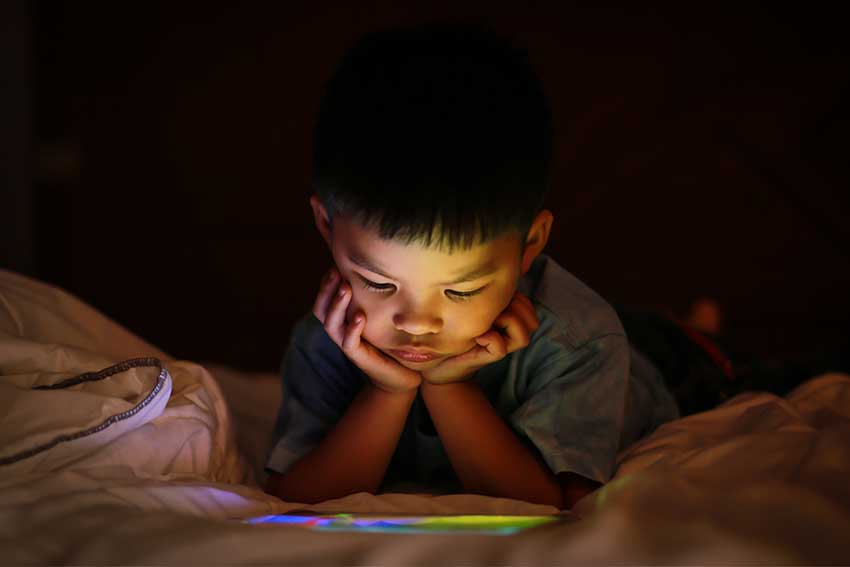Reducing high screen time for NZ kids

New guidance has just been published to support students’ use of digital technologies more safely in schools and other education settings.
It follows work earlier this year that identified frequent and extended device use has been linked to risk of harm to health of children in Aotearoa.
“‘Recommendations for the use of digital technologies: schools, kura and early childhood education,’ go some way to meeting the United Nations’ calls for urgent discussion and regulation of digitisation of education,” says lead author Julie Cullen.
The recommendations include evidence-based advice for safer screen use in education settings, across different ages and stages of development.
This includes interventions such as:
- eye breaks
- blinking exercises
- advice on safer use of headphones and earbuds
- limits on screen time or a balance of screen-based learning with screen breaks
- non-digital activities, and many others.
The findings have been endorsed by The Paediatric Society of New Zealand Te Kāhui Mātai Arotamariki o Aotearoa and are being hosted on the society’s website.
"The purpose of the recommendations is to ensure New Zealand students maximise the learning benefits that screen-based digital tools can offer, while minimising risks to health and wellbeing as they grow,” says Cullen.
“Digital technologies can offer opportunities for learning and other benefits, however, there is now broad agreement amongst the scientific community that digital devices and internet access also present a risk of harm to children and youth.”
Cullen is a paediatric physiotherapist and founder of Sensible Screen use and developed the recommendations in collaboration with other authors while studying at the Auckland University of Technology.
The work comes just months after she published a narrative review of studies looking at both the positive and negative health impacts of digital technologies.
These conversations are especially important for young New Zealanders, who have among the highest rates of screen use in the world, both at home and in the classroom.
The average global use of digital devices for learning, including in other wealthy countries, is once or twice per week.
The recommendations were produced by a diverse group of local and international scientists, educators, clinicians, and experts in digital media use for children and youth.
In addition to The Paediatric Society of New Zealand, they have also been reviewed and endorsed by The Pasifika Principals Association (NZPPA), Brainwave Trust, The Office for Early Childhood Education, The Australia and New Zealand Child Myopia Working Group and Sensible Screen Use.
The Paediatric Society of New Zealand says the guidelines “provide practical and comprehensive recommendations to maximise the educational benefits of digital technologies while minimising potential health risks”.
“The document is the result of extensive research and consultation with experts in education, health, and digital safety. It outlines actionable strategies for balancing screen time and promoting the best outcomes for all children, including those with special learning needs.”
Cullen welcomes the broad support for the guidelines.
“It shows the strong need for nuanced conversations about how children and teens can make the most of other opportunities digital technology provides, with lower risk than many students are currently facing,” she says.